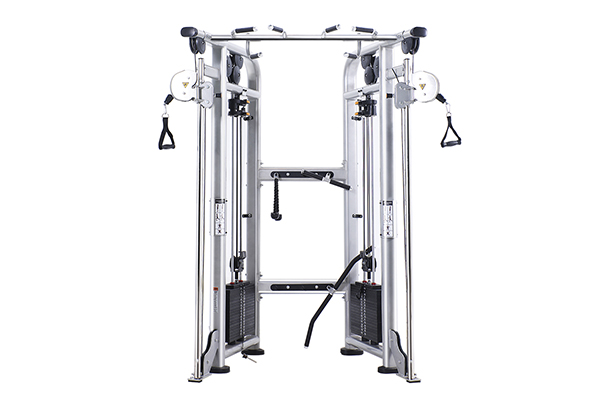Mastering the Squat Rack: A Comprehensive Guide to Proper Racking Technique
In the realm of strength training, squats stand as a cornerstone exercise, engaging multiple muscle groups and promoting overall fitness. While performing squats with proper form is crucial for maximizing benefits and minimizing injury risk, knowing how to safely rack the barbell after each repetition is equally important. Proper racking technique ensures stability, protects the bar and equipment, and prevents potential injuries.

Understanding the Anatomy of a Squat Rack
Before delving into racking technique, it’s essential to familiarize yourself with the components of a squat rack:
-
Uprights: The vertical supports that hold the barbell at the desired height for squats.
-
J-hooks or Pins: The attachments on the uprights that secure the barbell when racked.
-
Spotter Platforms: Optional platforms located behind the uprights to provide additional support or assistance.
Essential Steps for Proper Racking Technique
To safely and efficiently rack the barbell after each squat repetition, follow these steps:
-
Control the Descent: Maintain control of the barbell throughout the descent, ensuring it descends smoothly and evenly.
-
Engage Your Legs: Keep your legs active and engaged throughout the descent, preparing to re-extend your legs to rack the barbell.
-
Step Back and Up: Once you’ve reached the bottom of the squat, take a small step back while simultaneously extending your legs to bring the barbell to rack position.
-
Position the Barbell: Align the barbell with the J-hooks or pins, ensuring it’s centered and level.
-
Gently Rest the Barbell: Carefully guide the barbell onto the J-hooks or pins, allowing it to rest gently without crashing or causing undue strain on the equipment.
Common Racking Mistakes to Avoid
To prevent injuries and equipment damage, avoid these common racking mistakes:
-
Overextending Your Back: Avoid hyperextending your lower back as you rack the barbell, as this can strain your spine.
-
Uncontrolled Descent: Don’t let the barbell drop uncontrollably as you descend. Maintain control throughout the entire movement.
-
Using Excessive Force: Avoid slamming the barbell onto the J-hooks or pins, as this can damage the equipment and create a jarring impact.
-
Neglecting Spotter Platforms: Utilize spotter platforms if available, especially when lifting heavier weights, for additional support and safety.
Benefits of Proper Racking Technique
Proper racking technique offers several benefits:
-
Injury Prevention: Proper racking helps maintain control and balance, reducing the risk of injuries, particularly to the lower back and shoulders.
-
Equipment Protection: Proper racking prevents damage to the barbell and squat rack, ensuring their longevity and functionality.
-
Improved Efficiency: Proper racking promotes a smooth and efficient workout flow, minimizing wasted time and energy.
-
Confidence and Motivation: Proper racking instills confidence and a sense of mastery, motivating further progress in squat training.
Conclusion
Racking the barbell after each squat repetition is an integral part of the exercise, not an afterthought. Proper racking technique ensures safety, protects equipment, and enhances the overall squat experience. By following the outlined steps and avoiding common mistakes, individuals can master proper racking and reap the full benefits of squat training.If you want to buy a treadmill, you can consider Hongxing, a supplier of heavy duty commercial gym equipment, with favorable prices and guaranteed after-sales service.
Post time: 11-28-2023



